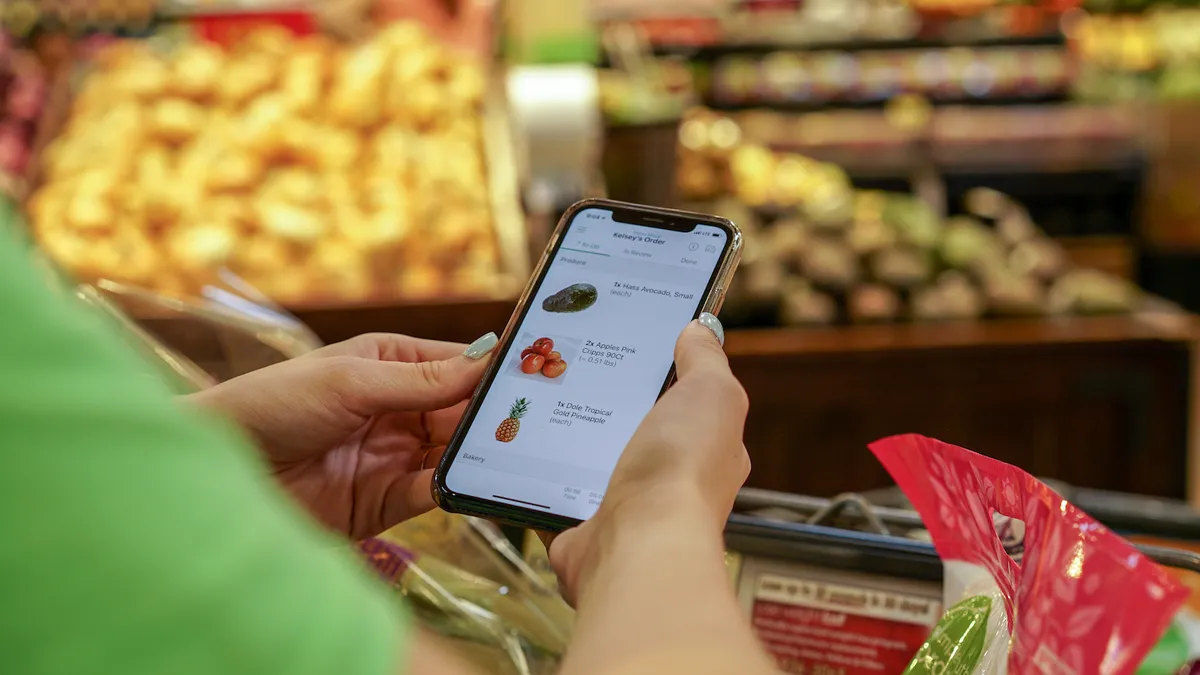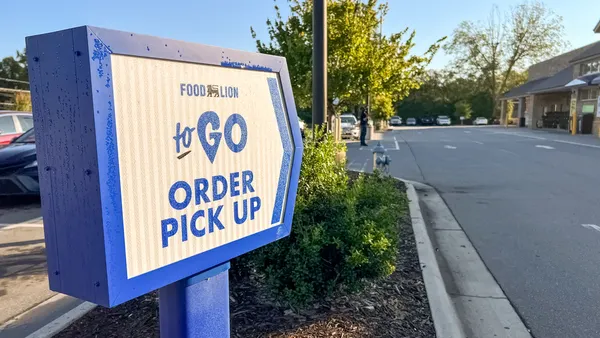Grocers' success in online ordering could make or break their relationship with customers, according to a report from Fabric, a micro-fulfillment company specializing in grocery operations.
"Our research shows that 65% of consumers would consider shopping from a different retailer if their normal grocery store didn’t provide a same-day home delivery or curbside pickup option," Fabric's chief commercial officer, Steve Hornyak, told sister publication Supply Chain Dive via email.
Industry projections show online grocery will claim a growing share of the overall market, potentially hitting $60 billion in sales by 2023, according to data from Statista. The Food Industry Association and Nielsen estimate online grocery sales will hit $143 billion by 2025. The speed and flexibility required to compete has already begun to transform retailers' approach to their operations. The following charts explain how.

Of the consumers Fabric surveyed, 92% said they prefer to have their online grocery orders fulfilled on the same day, and 33% said they want their order ready in two hours or less.
Same-day delivery has become table stakes for grocery chains over the past few years. Now, companies are working to make the task more profitable and scalable. Kroger has bet on British grocer Ocado's automated warehouses and software, while others are testing robot-powered micro-fulfillment in store warerooms. Other industry retailers have pursued artificial-intelligence powered inventory management software that can direct online orders to the store locations best-prepped to fulfill them on time while maintaining healthy stock levels.
But delivery is only part of the fulfillment equation, as demand for pickup continues to rise.

While Walmart and Target saw the largest increase in pickup availability among brick-and-mortar retailers Fabric studied, the rise of Instacart is hard to ignore. Going from 250 pickup locations in 2018 to approximately 1,500 in 2019, the app-based grocery service is racing to meet demand that's growing faster than the company anticipated.
Fabric found customers are almost as loyal to Instacart as they are to their favorite local store. If a retailer doesn't partner with the service, 43% of respondents said they would use a different retailer through Instacart — a level of interchangeability that has some in the industry worried.
Overall, Fabric's report found that while Amazon remains the retailer most consumers use for online grocery orders, competitors are quickly gaining ground.

Research shows most of Amazon's grocery orders come through its online marketplace and are small relative to the orders grocers fulfill. But Amazon is expanding its grocery footprint and earning fuller e-grocery baskets. Delivery from Whole Foods stores and through Amazon Fresh expanded to more than two dozen new cities in 2019. Amazon noted the number of delivery orders through both outlets has more than doubled over the past year.
Grocers, meanwhile, are trying to use their brick-and-mortar assets and close proximity to customers to their advantage, fulfilling online orders in-store or working with third-party services to pick, pack and deliver orders.
"Ninety percent of Americans live within 10 miles of a Walmart," Hornyak said. "Walmart has really successfully leveraged its existing network of stores, and has very strategically emphasized curbside pickup over home delivery."















